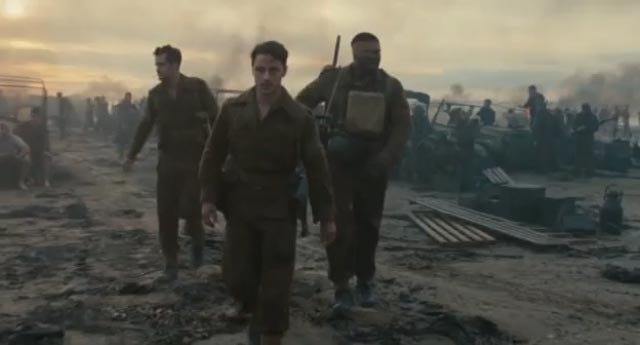Designing all of the intricate details of the landscape and setting for the film, is the sole responsibility of the Production Designer. In the case of Atonement, Sarah Greenwood was chosen to recreate McEwan's novel. Even Greenwood herself admits, in a background article, that, "from a design point of view, Atonement was a fantastic challenge." She goes on to explain that this was to be such a monumental task, solely due to the fact that she was responsible for multiple aspects of the landscape and setting. Greenwood details that she had to design not only the pre-war setting, but also the post-war setting, and the setting for the events which occur during the very graphic war scenes. To ensure accuracy, Greenwood dedicated a great deal of her time to consulting historical documents and photographs, and even visited several locations including the real beaches of Dunkirk. These experiences broadened her perspective, and in my eyes contributed greatly to the accuracy of the landscape and setting as adapted from the novel.
 |
| Transforming the Stokesay ruins into the Tallis fountain. |
There has been a great deal of discussion surrounding the landscape and setting of the scenes filmed on the "beaches of Dunkirk." Since its release in 2007, many individuals have stated that film does not do the evacuation at Dunkirk justice, because too much time is spent focused on the pre-war and post-war sections of the film. The general consensus is that the filming and tracking of these scenes are amazing, and the dedication of Greenwood and Wright to historical accuracy and detail, shows through clearly when examining the later half of the film. Greenwood states that she felt sure that they would find the setting for these scenes "somewhere on the east coast of England." Greenwood goes on to explain that she and Joe Wright, "drove for days along the coast, until [they] found the small coastal town of Redcar." After visiting the actual Dunkirk beaches, and reviewing countless hours of historical film, Greenwood was satisfied with her choice, and I believe that this accuracy is demonstrated in the landscape and setting portrayed in these scenes of the film.
I believe that Greenwood and Wright, but also the entire production crew, do an excellent job of spotlighting the important aspects of each of the settings, and this shows through in the viewers interpretation of these scenes. Whether it is the Tallis Manor, the beaches of Dunkirk, or even the halls of St. Thomas' Hospital in London, the painstaking dedication to detail and accuracy is clear.
 Though there may be a few aspects of the setting which don't exactly reflect the novel, one must remember that the medium of film is very different from that of literature, and that it is not always possible to adapt all aspects of the original novel. Film is a very distinct form, and has requirements which are quite different from that of a novel. For the most part however, I believe that most viewer's will agree that considering all the effort which must have gone into the process, from planning to production, and considering the massive scale for which the crew were responsible, the setting and landscapes in the film are well adapted from McEwan's original work, and contribute well to the viewers overall interpretation of the film.
Though there may be a few aspects of the setting which don't exactly reflect the novel, one must remember that the medium of film is very different from that of literature, and that it is not always possible to adapt all aspects of the original novel. Film is a very distinct form, and has requirements which are quite different from that of a novel. For the most part however, I believe that most viewer's will agree that considering all the effort which must have gone into the process, from planning to production, and considering the massive scale for which the crew were responsible, the setting and landscapes in the film are well adapted from McEwan's original work, and contribute well to the viewers overall interpretation of the film.
Food for Thought:
 Though there may be a few aspects of the setting which don't exactly reflect the novel, one must remember that the medium of film is very different from that of literature, and that it is not always possible to adapt all aspects of the original novel. Film is a very distinct form, and has requirements which are quite different from that of a novel. For the most part however, I believe that most viewer's will agree that considering all the effort which must have gone into the process, from planning to production, and considering the massive scale for which the crew were responsible, the setting and landscapes in the film are well adapted from McEwan's original work, and contribute well to the viewers overall interpretation of the film.
Though there may be a few aspects of the setting which don't exactly reflect the novel, one must remember that the medium of film is very different from that of literature, and that it is not always possible to adapt all aspects of the original novel. Film is a very distinct form, and has requirements which are quite different from that of a novel. For the most part however, I believe that most viewer's will agree that considering all the effort which must have gone into the process, from planning to production, and considering the massive scale for which the crew were responsible, the setting and landscapes in the film are well adapted from McEwan's original work, and contribute well to the viewers overall interpretation of the film.Food for Thought:

No comments:
Post a Comment